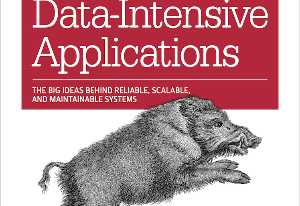Data-Intensive Application Design: A White Paper
Introduction
In today's digital age, applications are increasingly becoming data-intensive, relying heavily on large datasets to provide valuable insights and services. Designing such applications requires careful consideration of various factors, including data storage, processing, and retrieval. This white paper will delve into the key principles and best practices for designing data-intensive applications, with a focus on scalability, performance, and reliability.
Understanding Data-Intensive Applications
Data-intensive applications can be categorized into several types:
- Data Warehouses and Analytics: These applications store and analyze large datasets for business intelligence and reporting.
- Real-time Analytics: These applications process data in real-time to provide immediate insights and recommendations.
- Machine Learning and AI: These applications leverage algorithms to learn from data and make predictions or decisions.
- Internet of Things (IoT): These applications generate and process vast amounts of data from connected devices.
Key Design Considerations
-
Data Storage:
- Choose the right data storage system: Consider factors such as scalability, performance, cost, and reliability when selecting a storage system. Options include relational databases, NoSQL databases, data warehouses, and data lakes.
- Data partitioning: Divide large datasets into smaller partitions to improve performance and scalability.
- Data replication: Replicate data across multiple nodes to enhance fault tolerance and availability.
- Data compression: Compress data to reduce storage requirements and improve performance.
-
Data Processing:
- Batch processing: Process large datasets in batches for offline analysis or reporting.
- Stream processing: Process data in real-time as it is generated, enabling immediate insights and responses.
- Distributed processing: Distribute data processing tasks across multiple nodes to improve scalability and performance.
- Data pipelines: Create automated pipelines to move and transform data between different systems.
-
Data Retrieval and Querying:
- Indexing: Create indexes on frequently accessed data to improve query performance.
- Caching: Store frequently accessed data in memory to reduce database load and improve response times.
- Query optimization: Optimize SQL queries to minimize execution time and resource consumption.
- Denormalization: Denormalize data to improve query performance at the expense of data consistency.
-
Scalability:
- Horizontal scaling: Add more nodes to a distributed system to handle increased load.
- Vertical scaling: Upgrade existing nodes with more powerful hardware to improve performance.
- Elasticity: Automatically scale the system up or down based on demand.
-
Performance:
- Hardware optimization: Choose appropriate hardware (e.g., CPUs, memory, storage) to meet performance requirements.
- Software optimization: Optimize code and algorithms for efficiency.
- Caching: Use caching to reduce database load and improve response times.
- Asynchronous processing: Offload long-running tasks to asynchronous processes to improve responsiveness.
-
Reliability:
- Fault tolerance: Design the system to tolerate failures and continue operating.
- Data redundancy: Replicate data to prevent data loss.
- Disaster recovery: Implement a plan to recover from major failures.
Best Practices
- Start with a clear understanding of your data needs. Define the types of data you will be storing, processing, and querying.
- Choose the right technologies and tools. Select technologies that are well-suited for your specific use case and scale as your needs grow.
- Design for scalability from the beginning. Consider how your application will scale as your data volume and usage increase.
- Prioritize performance. Optimize your application for speed and responsiveness.
- Ensure reliability and fault tolerance. Implement measures to prevent data loss and minimize downtime.
- Continuously monitor and optimize. Regularly monitor your application's performance and make adjustments as needed.
References
- Designing Data-Intensive Applications by Martin Kleppmann
- Data-Intensive Text Processing with Apache Spark by Urs Holzle and Matei Zaharia
- Kafka: The Definitive Guide by Neha Kumar and Gwen Shapira
- Designing Distributed Systems by Brendan Gregg
- The Art of Scalability by Martin Fowler
By following these principles and best practices, you can design data-intensive applications that are scalable, performant, and reliable.



